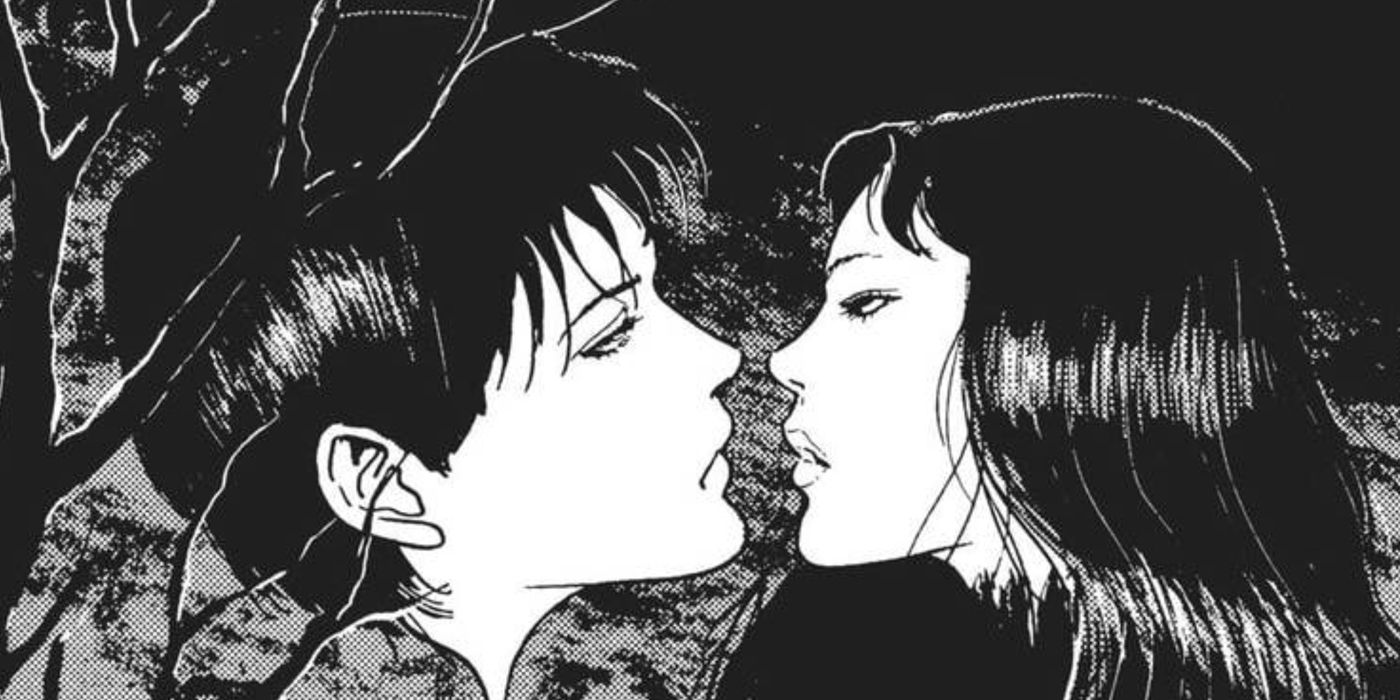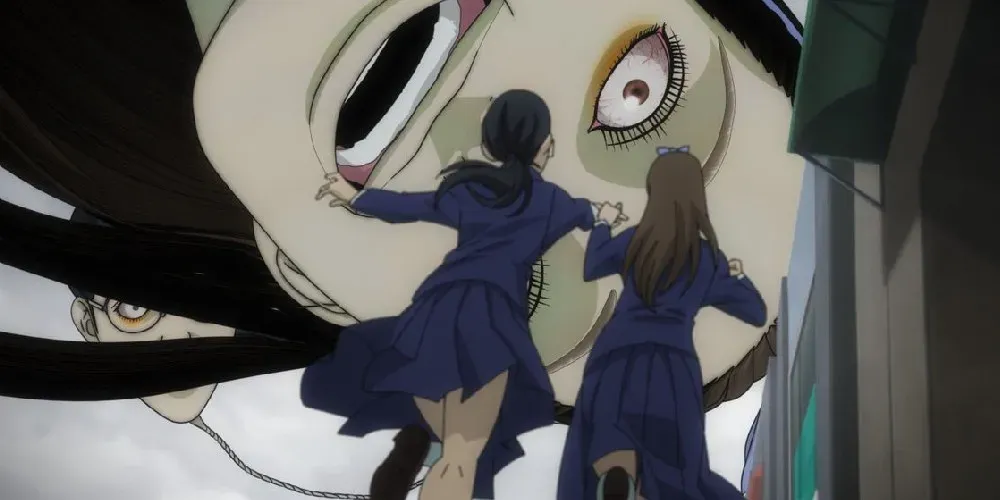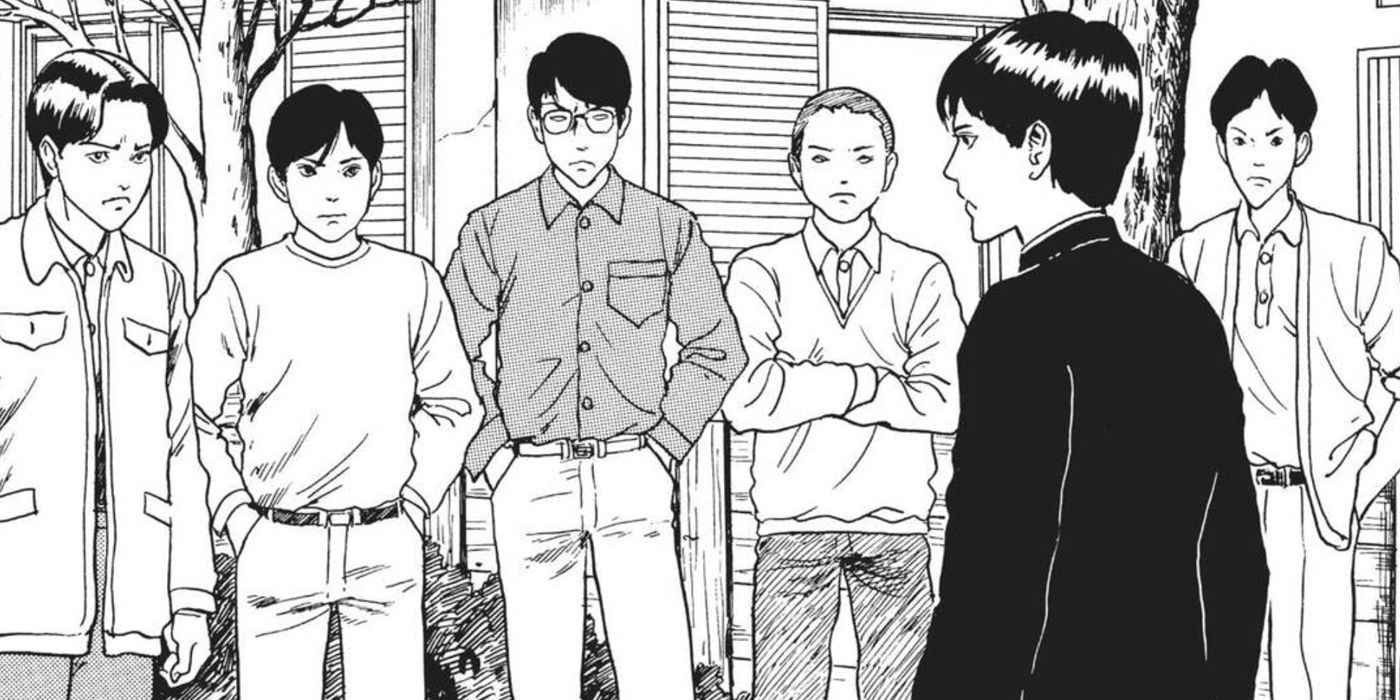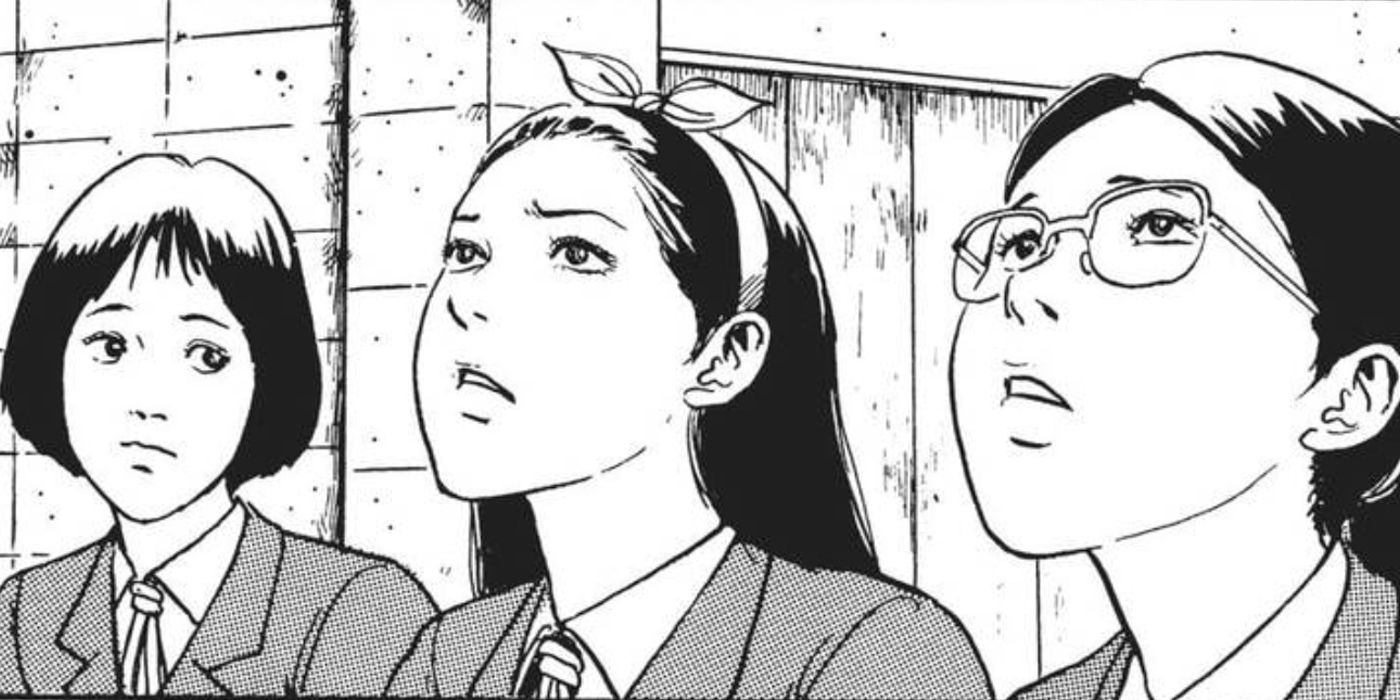The following contains spoilers for Junji Ito Collection: Shiver, "Hanging Blimp," now available from Viz Media, as well as discussion of suicide and self-harm.
On Jan. 19, 2023, Netflix released Junji Ito Maniac: Japanese Tales of the Macabre, which adapted some of the horror manga artist's most bizarre and horrific tales into an anime collection. Among the stories included was a tale called "The Hanging Balloons," a twisted and macabre story about a young girl trapped inside her home while a ballooned version of her own head taunts her to come outside. It quickly becomes obvious that there is a horrific theme in this story, one a lot of people tend to look away from and avoid talking about: suicide.
"The Hanging Balloons," originally published in the collection titled Shiver: Junji Ito Selected Stories, explores themes of life, pressure, toxic fandom, love, death and suicide. The way Ito explores them often has both readers and viewers scratching their heads because the imagery is as disturbing as it is horrific. It's all too easy to get distracted by the horror aspects without considering what, if any, hidden meaning exists in "The Hanging Balloon."
The Hanging Balloons' Commentary on Japan's Suicide Rates
While both Tomie and Souichii Tsujii are anthology series, "The Hanging Balloons" stands out as the only self-contained story Junji Ito Maniac will be adapting. Why is that? Is there something about the story that makes it a classic, or does it have a hidden meaning? Upon deeper analysis, both may be true. "The Hanging Balloons" is not only a well-crafted story with well-laid-out panels and outstanding artwork, but it also offers some very layered commentary on Japan's high suicide rate.
As a story, "The Hanging Balloons" (adapted by Viz Media as "Hanging Blimp") centers around the suicide of a teenage Japanese idol named Terumi Fujino. Terumi's death prompts a horrific domino effect on her fans, as teen suicide rates rise all across the country. This is not unheard of in Japan; in fact, it's well documented that celebrity suicides are often followed by spikes in suicides within a 10-day period.
It is not uncommon in Japan for people to look to popular celebrities as role models. Beautiful and successful, celebrities are like guides on the path to greatness in their own lives. A celebrity suicide is a shock to fans, who feel an almost obsessive connection with a person they barely know. Even people who didn't consider themselves a big fan may find themselves looking at someone who seemingly had it all and feeling like their own lives must be far worse if someone so successful lost their will to live. Pushing them to question themselves and their own view, confusion rattles their world and brings suppressed depression closer to the surface.
In the story itself, Terumi's death is treated as a national shock and the state of her mental health is sensationalized. Terumi feels pressured to perform and the uncertainty about her future -- a common source of stress among young Japanese people, who are often contracted for short-term jobs --pushes her over the brink.
Mental Health Taboos Prevail in The Hanging Balloons
Incidentally, "The Hanging Balloons" spotlights another social issue in Japan: the taboo surrounding the topic of mental health. As a rule-oriented society and culture, Japan values group harmony over individual expression since the survival of the whole country is dependent on this system. As such, differing opinions are discouraged and open conversations about difficult topics like mental health are avoided to prevent the disruption of collective comfort. Without the freedom to openly express what's on one's mind, this increases the likelihood of social isolation, which in turn worsens depression symptoms and increases the likelihood of suicide. This topic is metaphorically explored with the characters of Kazuko and Shinya Shiraishi.
Throughout the story, Kazuko is grieving the loss of Terumi, who was also her classmate and best friend. Despite the fact that hundreds of other people are also grieving Terumi's death, at no point does Kazuko share her feelings with her friends and family. Instead, Kazuko internalizes her feelings.
The same is true for Shiraishi, Terumi's boyfriend. Terumi's fans blamed Shiraishi for her suicide, believing he put too much pressure on her to have a relationship. This led to him being ganged up on by her bullying fans. Already depressed about his girlfriend's death, he blames himself. Exploring another driving force of suicide, especially in the age of social media: toxic fandom, Shiraishi gives in and takes his own life, provoking one of the more disturbing scenes as the pair's buoyant, severed heads come together for a kiss.
The Hanging Balloons Symbolize Suicidal Thoughts
In Shiraishi's case, Terumi's fans engaged in abusive behavior toward him, which worsened his depression and suicidal ideation. This is when the "balloons" start to appear in the story, with the "ghostly head of Terumi" being the first to appear. This is followed by the appearance of Shiraishi's head, which has a noose around it, symbolizing his thoughts of suicide. When Shiraishi goes to meet with "the ghost" of his deceased girlfriend, his head balloon captures his neck into the noose and hangs him. Shortly after Shiraishi joins Terumi in death, more head balloons start to appear, and even begin chasing people down to claim their lives.
One by one, the head balloons start "claiming" the lives of large numbers of people all over Japan. Trapped in their home as chaos grows beyond the walls, Kazuko's family venture out one by one, until Kazuko is the only one left alive. The fact that Kazuko ends up isolating herself inside her bedroom before her balloon "gets" her is consistent with suicide trends as they are observed in Japan. Furthermore, the fact that the people are hanged by balloons that resemble their severed heads is a commentary on how people contemplating suicide don’t usually show that they are suicidal until it is too late.
For more information on the warning signs and prevention of suicide, click here. If you or someone you know is in emotional distress or considering suicide, call the National Suicide Prevention Lifeline at 1-800-273-TALK (8255). If you live outside the U.S., click here for a list of international hotlines.
Junji Ito Maniac: Japanese Tales of the Macabre is available to stream on Netflix.




